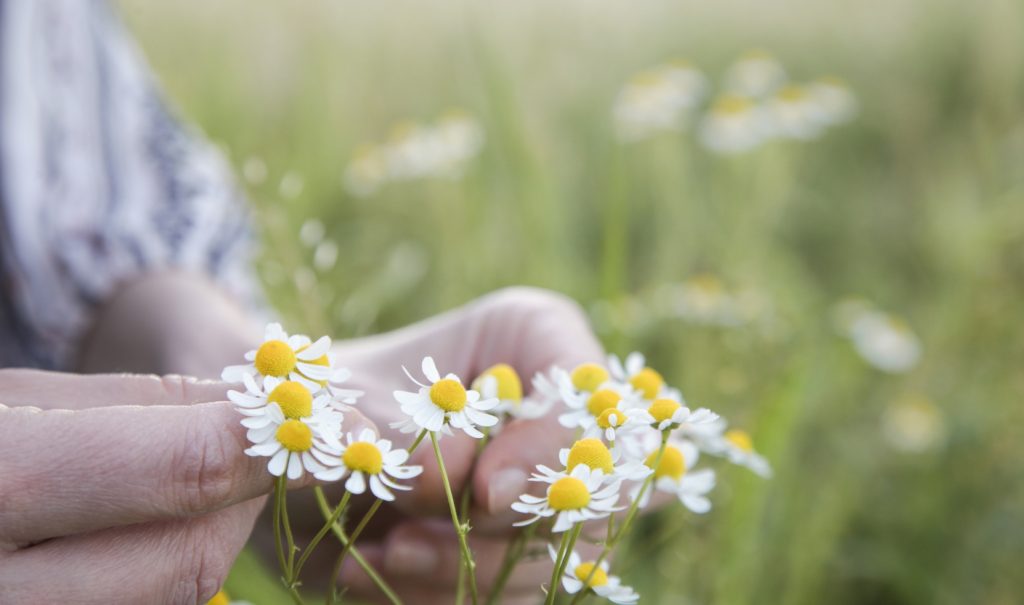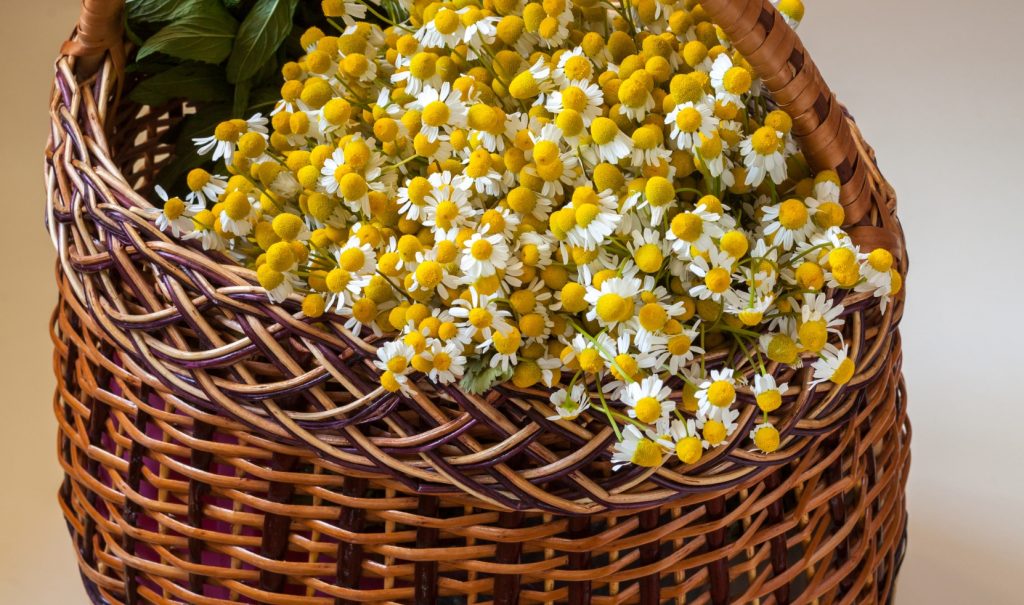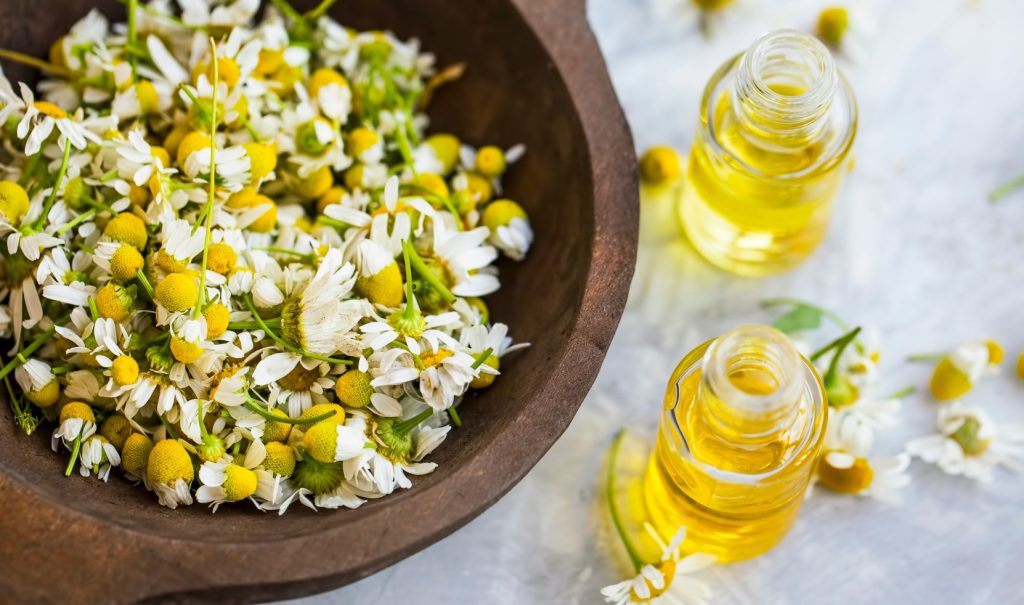Imagine strolling through your garden on a warm summer afternoon, the sweet scent of chamomile wafting through the air. You’ve nurtured those delicate white flowers, watching them bloom, and now you’re faced with a pressing question: when’s the right time to harvest Chamomile? It can feel a bit like waiting for the perfect moment to catch a sunset—too early and you miss the magic; too late and it’s gone.
Click here to purchase your medicinal garden kit!
Understanding Chamomile
Chamomile, with its delicate white petals and sunny yellow centres, isn’t just a pretty flower. It carries a rich history of use in traditional medicine and culinary applications. I remember the first time I planted chamomile in my garden; the simple act of nurturing it felt rewarding. With time, I discovered its many uses, from soothing teas to skin-care oils. I’m fascinated by how this humble flower, known for its calming properties, can positively impact both health and wellness. Why should anyone care? Because understanding chamomile can transform your relationship with this plant, making you appreciate its beauty and benefits even more.
Chamomile thrives in sunny locations and well-drained soil, often appearing in gardens across Europe and North America. Two primary types exist: German chamomile (Matricaria chamomilla) and Roman chamomile (Chamaemelum nobile), each offering unique characteristics. German chamomile typically stands taller and produces more flowers, while Roman chamomile creates a lush, low-growing mat. Knowing these differences helps gardeners select the best variety for their space, contributing to overall garden health.
What’s intriguing is chamomile’s life cycle. It may bloom in just a few months, yet the timing for harvesting the flower heads is crucial. Harvesting too early means missing out on the full flavour and medicinal potency. Harvesting too late risks losing the blossoms to rain, pests, or simply wilting. I’ve learned to keep a close eye on my plants, observing the flowers as they transition from tight buds to fully open, golden centres.
But how can you tell when the time is right? A simple rule: harvest when the flowers are fully open but before they start to lose their vibrant colour. The best time is typically in late spring or early summer, depending on your climate. It’s all about tuning into the plants, feeling the rhythm of the seasons.
Many folks may overlook the gentle nurturing chamomile requires—consistent watering and a little space to breathe. I often find myself talking to my plants, coaxing them gently to encourage growth. This connection enhances the experience and even boosts the plants’ resilience against pests. Cultivating chamomile isn’t just about the flowers; it’s about nurturing a cycle that connects us to nature.
Understanding chamomile involves more than knowing its physical characteristics. It’s about cultivating a relationship that fosters growth, appreciation, and joy—not just in the garden, but in the benefits chamomile brings to our lives. And that’s something every gardener can relate to.
The Growth Cycle of Chamomile
Understanding chamomile’s growth cycle enhances my ability to harvest at the perfect time. Each stage offers unique insights that connect me with this charming flower.
Germination Stage
In the germination stage, I marvel at the tiny seeds that hold so much promise. Chamomile seeds germinate in approximately 7 to 14 days, needing warmth and moisture. I often sprinkle them on well-drained soil and lightly cover them with fine soil, keeping them moist. Watching those first green shoots emerge is rewarding; it’s a reminder that patience is key in gardening.
After germination, I remember to thin the seedlings to allow strong plants to flourish. This initial care sets the foundation for a healthy crop. I wonder, why rush the process? It’s during these quiet waits that I connect deeply with nature, seeing how every tiny seed can become a vibrant flower.
Click here to purchase your medicinal garden kit!
Flowering Stage
As my chamomile plants mature, they enter the flowering stage. Usually, this occurs around 60 to 80 days after germination. During this time, I notice the buds form, hinting that the garden will soon burst into colour.
The flowers are my favourite part. They open, revealing those delicate white petals and golden centres—nature’s art. It’s vital I harvest the heads when they’re fully open, just before they fade, for the best flavour and medicinal properties. The aroma is enchanting, with a gentle sweetness that fills the garden.
Observing this stage, I often ask myself, why do I treasure this process? Each blossom is a reminder of nature’s cycles and the satisfaction that comes from my nourishing efforts. It’s not just about harvesting; it’s about celebrating the journey.

Signs That Chamomile Is Ready to Harvest
Recognising when chamomile is ready for harvest transforms the experience from mere gardening to a celebration of nature’s beauty. Paying attention to the subtle signals ensures a rewarding harvest.
Click here to purchase your medicinal garden kit!
Flower Appearance
The most obvious sign of chamomile readiness lies in the flowers’ appearance. When the petals become fully open, showcasing their crisp white edges against a vibrant yellow centre, it’s time to act. I’ve found that waiting until the flower heads are fully mature, yet fresh, captures the essence of chamomile’s flavour. If you notice any wilting or browning, it’s a signal to harvest promptly; otherwise, the quality diminishes. It’s as if the garden whispers, urging you to collect the flowers before they slip away. Harvesting in the morning, shortly after dew has dried, often yields the best flavour. Have you noticed that freshness in the first light of day enhances the experience?
Aroma and Taste
Aroma plays a crucial role in determining chamomile’s readiness. When the flowers emit that signature sweet, apple-like fragrance, you know they’re at their peak. It’s a scent that fills the garden with warmth, bringing memories of blissful tea-drinking moments. Imagine taking a deep breath, closing your eyes as that familiar aroma envelops you—that’s chamomile gently calling for harvest. A taste test often seals the deal; the flavour should be delicate yet distinct. I’ve savoured the difference between flowers harvested at their peak versus those picked too late—it’s remarkable how time affects taste. Engage your senses; when the aroma entwines with flavour, you’ll truly appreciate the essence of chamomile in your homemade tea or skincare oils.
Best Practices for Harvesting Chamomile
Harvesting chamomile involves precise timing and an understanding of the right tools. Knowing when to gather your bounty enhances both the flavour and the purpose behind the harvest.
Timing and Weather Considerations
Timing’s crucial for a successful chamomile harvest. I’ve found that the best moment to pick those lovely blooms comes in mid-morning, after the dew has dried but before the sun’s harsh rays take over. This little window not only protects the delicate flowers but also locks in their aromatic sweetness. Have you ever noticed how blooms seem to lose their charm under harsh sunlight?
Weather plays a role, too. A dry day improves the harvesting experience, as wet flowers can be slippery and may not dry well after picking. There’s something magical about strolling through the garden, knowing that today’s the day to savour what nature’s offered. Imagine plucking each flower gently, feeling its softness—when they’re at their peak, the golden centres and fully open petals just call out to be picked.

Tools Needed for Harvesting
Having the right tools makes harvesting much smoother. I rely on sharp, clean scissors or snips. Such tools help ensure a clean cut, which is vital for the plant’s health and increases the shelf life of the flowers. It’s like giving a good haircut; no one wants uneven ends, right?
A basket or cloth bag for collection is also essential. I’ve tried using plastic bags before, but they can bruise the delicate blossoms. Instead, I favour a breathable option that allows them to stay fresh. I’ve even seen folks use a small basket with a handle, which feels charmingly rustic and functional.
Consider wearing gloves if your hands are sensitive; accumulating the sticky oils from the petals can be irritating. Yet, there’s something grounding about harvesting with bare hands, feeling the earthiness. Whatever tools you choose, ensure they match your harvesting style and comfort. This process isn’t just about gathering a crop—it’s about connecting with nature in your own splendid way.

Conclusion
Harvesting chamomile is more than just a task; it’s a delightful experience that connects me with nature. Watching the flowers bloom and knowing the right moment to pick them brings such joy. I’ve learned that timing is everything when it comes to capturing their full flavour and aroma.
Whether it’s the sweet scent wafting through the garden or the vibrant colours of the flowers, each aspect adds to the magic of the moment. So as I gather my chamomile blooms I cherish the process and the memories created along the way. Happy harvesting!


Pingback: The Best Medicinal Plants To Grow At Home -